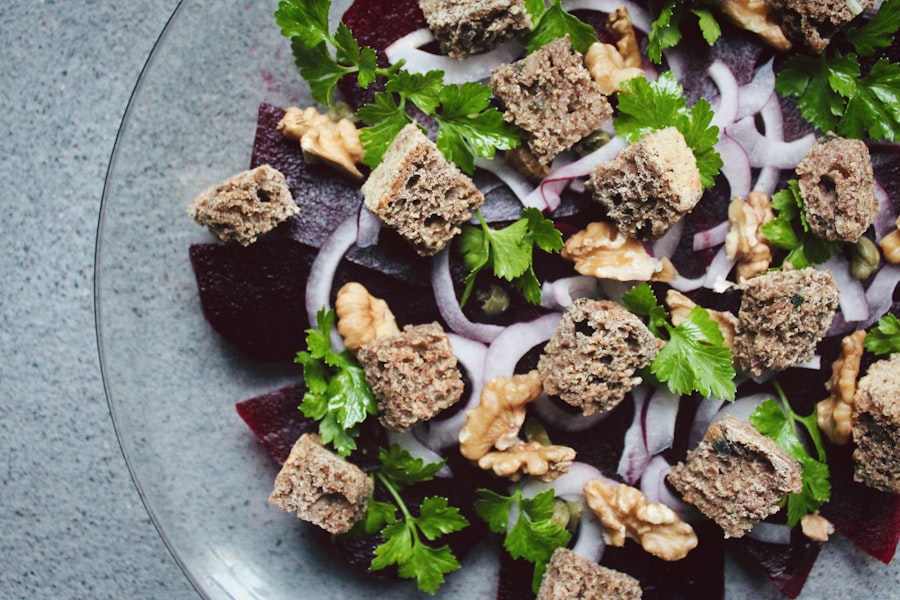In recent years, the landscape of food consumption has undergone a significant transformation, largely driven by an increasing awareness of health and wellness among consumers. The rise of healthy food delivery services is a testament to this shift, as more individuals seek convenient yet nutritious meal options that align with their dietary preferences and lifestyle choices. This trend has been fueled by a combination of factors, including the growing prevalence of chronic diseases linked to poor dietary habits, the busy lifestyles of modern consumers, and the desire for sustainable eating practices.
As a result, healthy food delivery services have emerged as a viable solution for those looking to maintain a balanced diet without sacrificing convenience. The COVID-19 pandemic further accelerated the growth of these services, as lockdowns and social distancing measures prompted many to seek alternatives to traditional dining. With restaurants closed or operating at limited capacity, consumers turned to meal delivery services that offered healthy options.
This shift not only highlighted the demand for nutritious meals but also underscored the importance of accessibility in maintaining a healthy lifestyle. As a result, numerous startups and established companies have entered the market, offering a diverse array of meal plans tailored to various dietary needs, from vegan and gluten-free to paleo and keto. The proliferation of these services reflects a broader cultural movement towards health-conscious eating, making it easier than ever for individuals to prioritize their well-being.
Key Takeaways
- Healthy food delivery services have seen a significant rise in popularity due to increasing health consciousness and busy lifestyles.
- These services work by offering a variety of nutritious meal options that are prepared and delivered to the customer’s doorstep.
- Using healthy food delivery services can lead to benefits such as convenience, time-saving, and access to balanced and portion-controlled meals.
- There are different types of healthy food delivery services available, including meal kit delivery, pre-made meal delivery, and specialized diet meal delivery.
- When choosing a healthy food delivery service, it’s important to consider factors such as cost, menu variety, dietary preferences, and delivery options.
How Healthy Food Delivery Services Work
How Healthy Food Delivery Services Work
Healthy food delivery services typically operate on a subscription model, where customers can choose from a variety of meal plans based on their dietary preferences and nutritional goals. Upon signing up, users are often required to fill out a detailed questionnaire that assesses their eating habits, allergies, and specific dietary restrictions. This information allows the service to curate personalized meal options that cater to individual needs.
Meal Planning and Logistics
Once the meal plan is selected, customers can expect regular deliveries of pre-portioned ingredients or fully prepared meals, depending on the service they choose. The logistics behind these services involve careful planning and execution. Many companies partner with local farms and suppliers to source fresh, organic ingredients, ensuring that meals are not only healthy but also sustainable.
Meal Preparation and Delivery
After sourcing the ingredients, meals are prepared in commercial kitchens by professional chefs who focus on creating balanced dishes that meet nutritional guidelines. The meals are then packaged in eco-friendly containers and delivered directly to customers’ doorsteps. This streamlined process not only saves time for consumers but also reduces food waste by providing precisely measured portions.
Benefits of Using Healthy Food Delivery Services

One of the primary benefits of utilizing healthy food delivery services is the convenience they offer. For busy individuals juggling work, family, and social commitments, finding time to plan, shop for, and prepare nutritious meals can be a daunting task. Healthy food delivery services eliminate this burden by providing ready-to-eat meals or easy-to-prepare kits that require minimal effort in the kitchen.
This convenience allows consumers to enjoy wholesome meals without the stress of meal planning or grocery shopping. Additionally, these services often promote healthier eating habits by encouraging users to try new ingredients and recipes they may not have considered otherwise. Many meal delivery companies focus on seasonal produce and diverse cuisines, exposing customers to a variety of flavors and cooking techniques.
This culinary exploration can lead to a more balanced diet and an increased appreciation for whole foods. Furthermore, by providing meals that are nutritionally balanced and portion-controlled, these services can help individuals manage their weight more effectively and make healthier choices overall.
Types of Healthy Food Delivery Services Available
| Service Type | Description |
|---|---|
| Meal Kit Delivery | Provides pre-portioned ingredients and recipes for customers to cook at home. |
| Prepared Meal Delivery | Offers fully cooked and ready-to-eat meals that can be reheated at home. |
| Healthy Snack Delivery | Delivers a variety of nutritious snacks and treats to customers’ doorsteps. |
| Fruit and Vegetable Box Delivery | Brings fresh produce directly from farms to customers’ homes on a regular basis. |
The market for healthy food delivery services is diverse, catering to a wide range of dietary preferences and lifestyles. One popular category is meal kit delivery services, which provide customers with pre-measured ingredients and step-by-step recipes to prepare their own meals at home. These kits often focus on fresh produce and lean proteins, allowing users to cook healthy dishes while honing their culinary skills.
Companies like Blue Apron and HelloFresh have capitalized on this trend by offering various meal plans that cater to different dietary needs. Another type of service is fully prepared meal delivery, where customers receive ready-to-eat meals that require no cooking or preparation. These meals are typically designed by nutritionists and chefs to ensure they meet specific dietary guidelines while still being flavorful and satisfying.
Brands like Freshly and Snap Kitchen exemplify this model, providing busy individuals with nutritious options that can be heated in minutes. Additionally, there are specialized services targeting specific diets, such as vegan or keto meal delivery options, which cater to those with particular nutritional goals or restrictions.
Factors to Consider When Choosing a Healthy Food Delivery Service
When selecting a healthy food delivery service, several factors should be taken into account to ensure it aligns with personal preferences and lifestyle needs. First and foremost, consider dietary restrictions or preferences. Many services offer customizable meal plans that cater to specific diets such as vegetarian, vegan, gluten-free, or low-carb options.
It’s essential to choose a service that can accommodate these needs without compromising on taste or nutrition. Another important factor is the quality of ingredients used in the meals. Look for services that prioritize fresh, organic produce and ethically sourced proteins.
Transparency regarding sourcing practices can provide peace of mind about the quality of the food being consumed. Additionally, consider the variety of meals offered; a service with a rotating menu can help prevent meal fatigue and keep dining experiences exciting. Lastly, evaluate the pricing structure and delivery options available; some services may charge extra for shipping or have minimum order requirements that could impact overall costs.
Tips for Making the Most of Your Healthy Food Delivery Service

To maximize the benefits of a healthy food delivery service, it’s important to approach it with intention and planning. Start by familiarizing yourself with the menu options available each week; many services provide previews of upcoming meals that allow you to select dishes you’re excited about. This proactive approach can enhance your overall experience and ensure you’re receiving meals that align with your tastes.
Incorporating flexibility into your meal planning can also be beneficial. While it’s tempting to stick strictly to the provided meal plan, consider supplementing your deliveries with additional fresh produce or pantry staples from local grocery stores. This can help you create more varied meals throughout the week while minimizing food waste from unused ingredients.
Additionally, don’t hesitate to experiment with the recipes provided; adding your own twist or substituting ingredients can lead to delightful culinary discoveries.
Potential Drawbacks of Healthy Food Delivery Services
Despite their many advantages, healthy food delivery services are not without potential drawbacks. One common concern is the cost associated with these services compared to traditional grocery shopping. While many consumers appreciate the convenience and time savings offered by meal delivery services, they may find that prices can be higher than purchasing ingredients directly from stores.
This can be particularly challenging for those on tight budgets who may need to prioritize cost over convenience. Another potential drawback is the reliance on pre-packaged meals or kits, which may not always align with individual nutritional needs or preferences over time. Some users may find themselves growing tired of certain flavors or ingredients if they do not have control over their meal choices.
Additionally, while many companies strive for sustainability in their packaging practices, there is still an environmental impact associated with single-use containers and shipping logistics that consumers should consider when opting for these services.
The Future of Healthy Food Delivery Services
As consumer demand for health-conscious options continues to grow, the future of healthy food delivery services appears promising. Innovations in technology are likely to play a significant role in shaping this industry; for instance, advancements in artificial intelligence could enable more personalized meal recommendations based on individual health data and preferences. This level of customization could enhance user satisfaction and encourage adherence to healthier eating habits.
Moreover, as sustainability becomes an increasingly pressing concern for consumers, healthy food delivery services may need to adapt by implementing more eco-friendly practices. This could include using biodegradable packaging materials or partnering with local farms to reduce carbon footprints associated with transportation. Additionally, as awareness around food waste grows, companies may explore ways to minimize waste through better inventory management or offering discounts on surplus meals.
In conclusion, healthy food delivery services represent a dynamic intersection of convenience and nutrition in today’s fast-paced world. As these services continue to evolve in response to consumer needs and societal trends, they hold the potential not only to transform individual eating habits but also to contribute positively to broader public health outcomes.
FAQs
What are healthy food delivery services?
Healthy food delivery services are companies that prepare and deliver nutritious and balanced meals to customers’ homes or offices. These meals are often designed by nutritionists and chefs to provide a convenient and healthy option for those with busy lifestyles.
What types of meals do healthy food delivery services offer?
Healthy food delivery services offer a variety of meals, including breakfast, lunch, dinner, and snacks. These meals are often tailored to specific dietary preferences and restrictions, such as vegetarian, vegan, gluten-free, or low-carb options.
How do healthy food delivery services work?
Customers typically sign up for a healthy food delivery service online or through a mobile app. They can then choose their meals from a weekly menu and select their delivery preferences. The meals are then prepared and delivered to the customer’s specified location.
What are the benefits of using a healthy food delivery service?
Using a healthy food delivery service can save time on meal preparation, provide access to nutritious and balanced meals, and help individuals maintain a healthy diet. It can also be a convenient option for those with busy schedules or limited cooking skills.
Are healthy food delivery services suitable for specific dietary needs?
Yes, many healthy food delivery services offer meals tailored to specific dietary needs, such as vegetarian, vegan, gluten-free, or low-carb options. Customers can often customize their meal selections to accommodate their individual dietary preferences and restrictions.
Are healthy food delivery services affordable?
The cost of healthy food delivery services can vary depending on the company and the specific meal plan chosen. While some services may be more expensive than traditional grocery shopping and meal preparation, others offer affordable options and discounts for regular customers.
